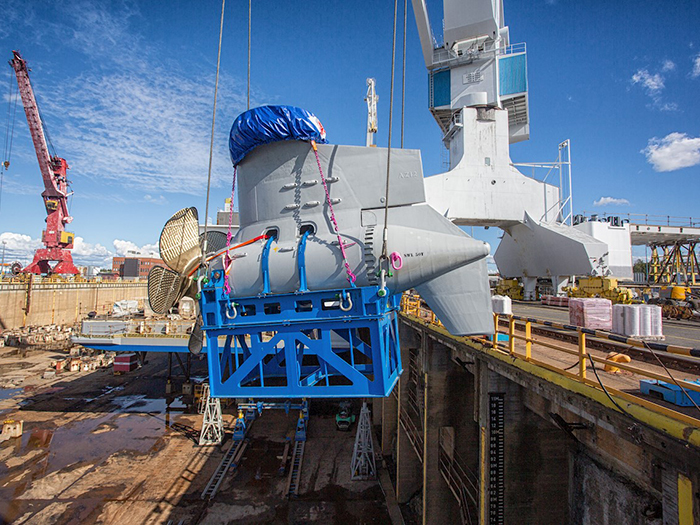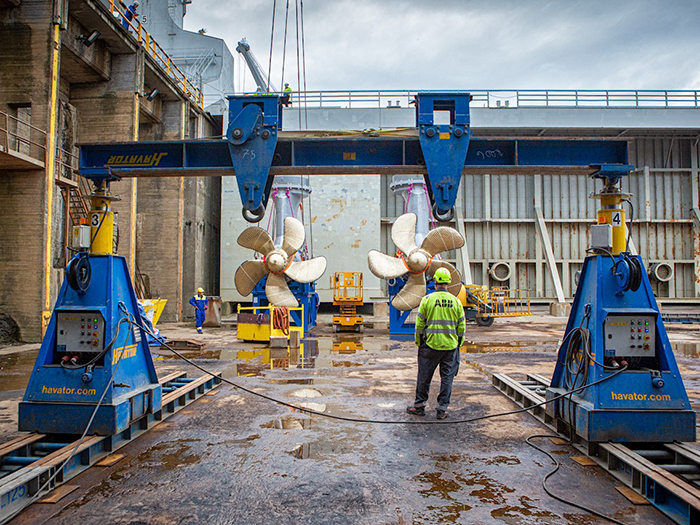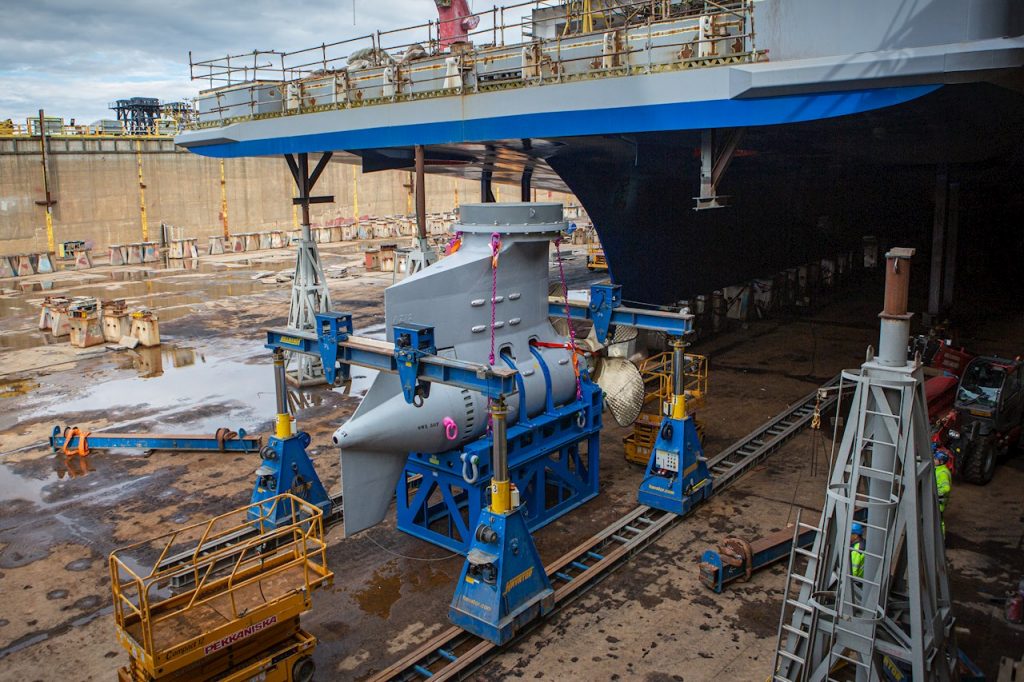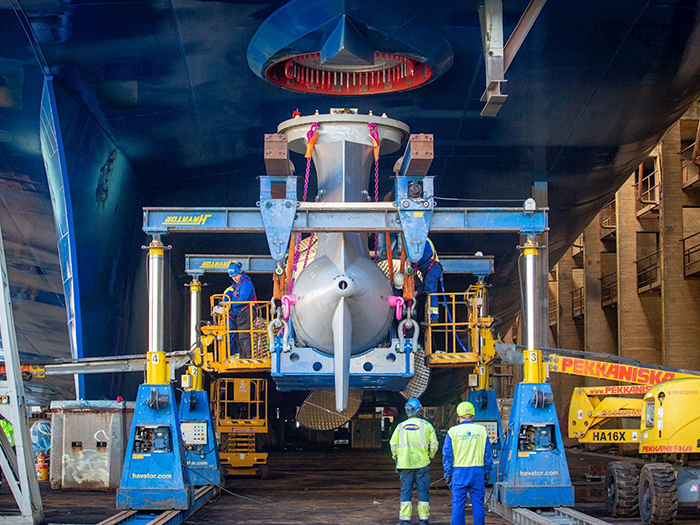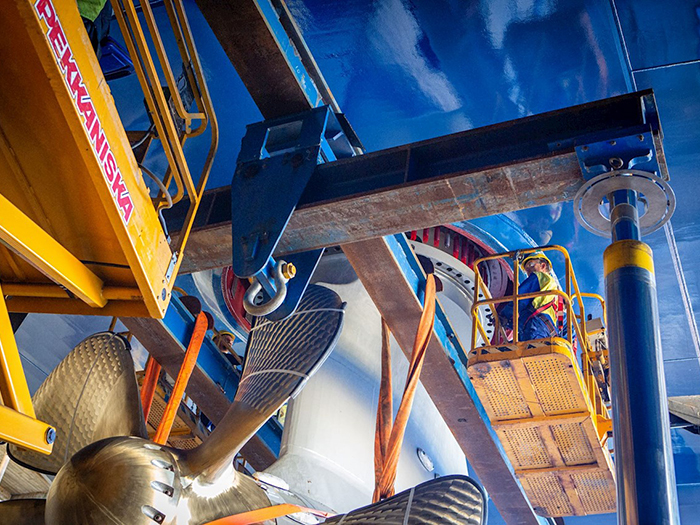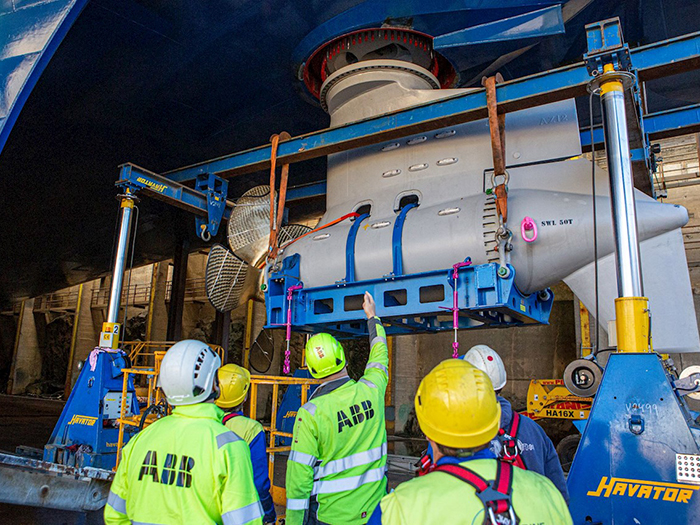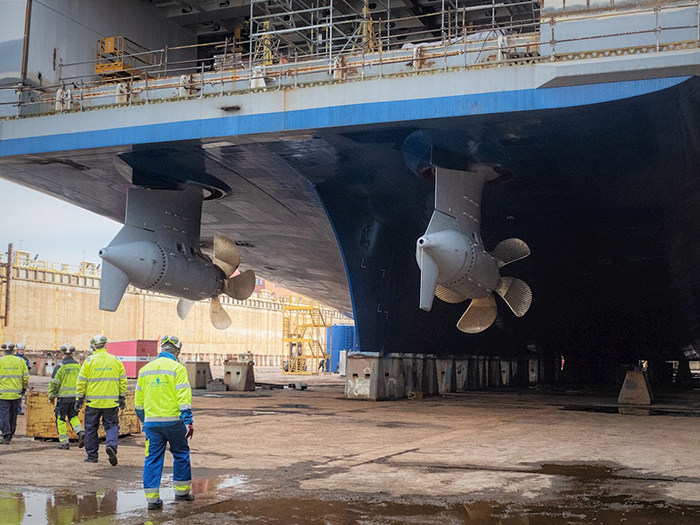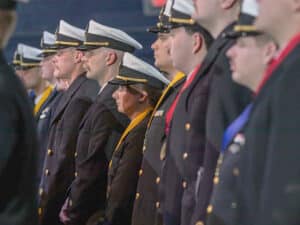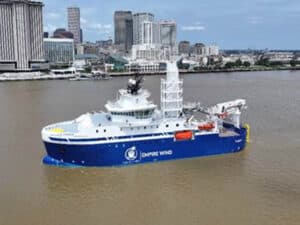
RMC installs Azipods in RoPax newbuild in one week
Written by Nick Blenkey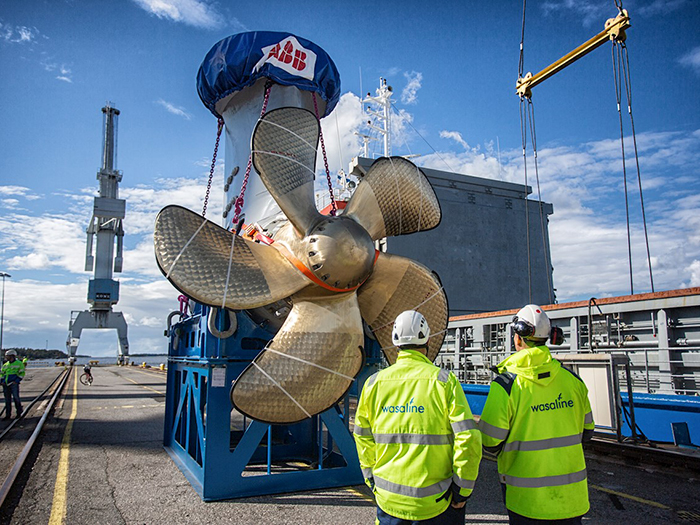
Azipod propulsion units arrived at Rauma Marine Constructions fully assembled and ready for immediate installation, complete with a propeller.
Finnish shipbuilder Rauma Marine Constructions (RMC) has taken just one week to complete the installation of the ice-class Azipod propulsion solution in the new 150 meter RoPax ferry it is building for Wasaline.
Set to enter service in 2021, the new ferry, Aurora Botnia, will have the capacity to transport 800 passengers and up to 1,500 lane meters of trucks and cars, on the world’s northernmost all-year passenger route, between Vaasa in Finland and Umeå in Sweden. completing two round trips per day in high season
Dubbed one of the world’s most environmentally passenger friendly ferries, the 150-meter vessel is equipped with the ice-class Azipod electric propulsion to ensure the most efficient and sustainable operation in any conditions.
“We chose ABB’s Azipod electric propulsion for several reasons,” said Peter Ståhlberg, Wasaline CEO. “Superior maneuverability will save time and increase productivity, enabling precise schedules to be maintained on this route. We calculated likely annual time savings of close to four days of operation, which was compelling. The solution also saves valuable space on board and simplifies hull construction. Access to ABB’s training and support services in Finland were other major plus points.”
The Azipod electric propulsion system was delivered to the shipyard fully engineered and ready for immediate installation. It was installed on the newbuild ferry by shipyard, supervised by the local ABB Marine & Ports commissioning team, according to schedule and successfully gained acceptance by yard, owner, and classification society.
Johanna Kaijo, Rauma Marine Constructions’ Project Manager in charge of the project, noted ease of installation as a key benefit.
“We were able to install the Azipod units in just one week. For us as a shipbuilder, this translates into significant project flexibility by helping to optimize time and resources,” she said. “Having fully engineered units has notably improved the completion of the vessel construction – the installation was literally about plugging the ready-made units into the vessel hull.”
